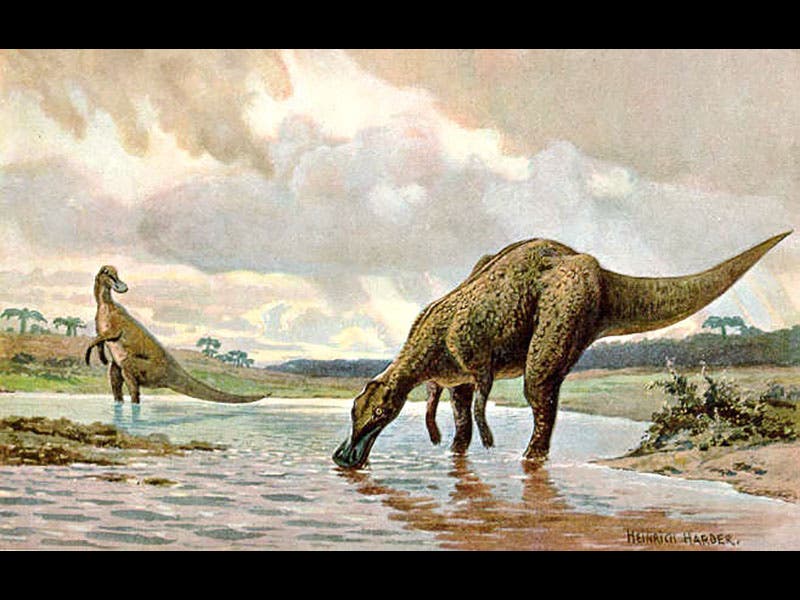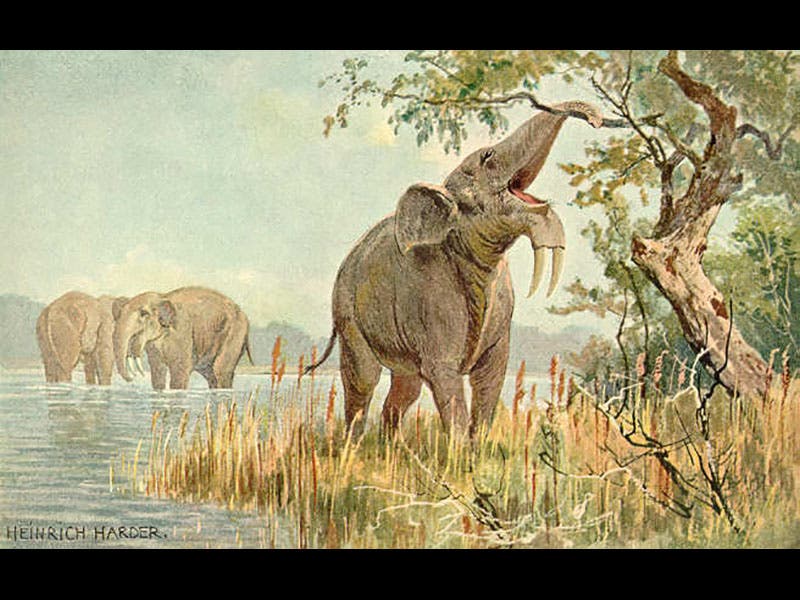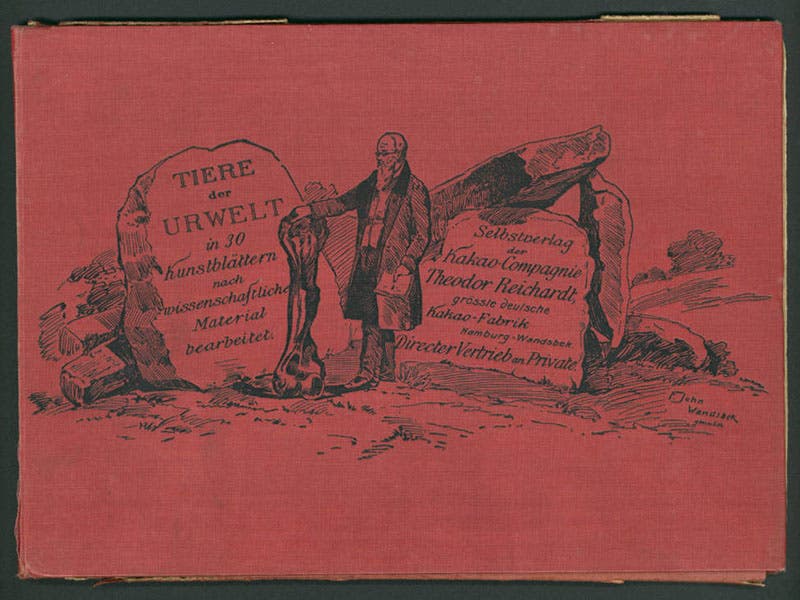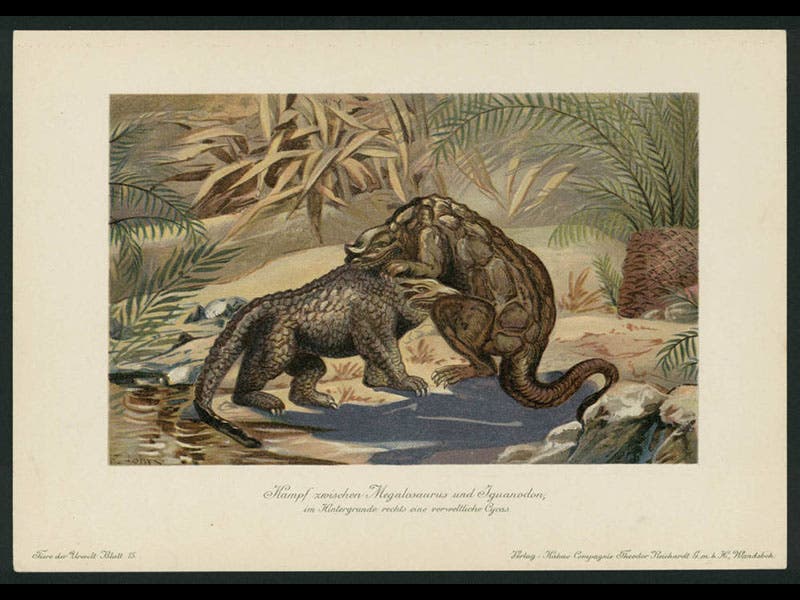Scientist of the Day - Heinrich Harder
[/imagetab]
Heinrich Harder, a German artist and illustrator of prehistoric life, died Feb. 5, 1935, at the age of 76. Harder painted landscapes and taught at the Prussian Academy of Art in Berlin, but he is remembered primarily for a series of restorations of prehistoric mammals and reptiles that were issued as collector cards in packets of chocolate sold by the Reichhardt Cocoa Company around 1916. Many of these sets survive; someone has gone to the trouble of putting most of one set of 60 on Wikipedia, where you can see an Iguanodon (first image above), a pair of Hadrosauri (second image), and, as an example of Harder’s prehistoric mammals, a Dinotherium (third image). According to all the sources (including Wikipedia), the text for these cards was written by Wilhelm Bölsche, and the folder issued to hold the cards carried the title Tiere der Urwelt (Prehistoric Animals).
Some years ago, about the time we were mounting our Paper Dinosaurs exhibition, we had a chance to acquire Bölsche's Tiere der Urwelt, published by Reichardt, and we did so, and we even digitized our set and made it available online. You can see the cover of our copy above (fourth image). But our set does not contain any illustrations by Harder. Instead the prints are signed "F. John", and they differ considerably from the Harder images and are less skillfully conceived and drawn; the “Battle between Megalosaurus and Iguanodon” shown above (fifth image) is just a poor copy of an 1863 wood engraving. So why did Reichardt issue two completely different sets of prehistoric cards under the same title and author? That is a bit of a mystery. We do not have the Harder set in the Library, and the first step in solving the mystery would be to acquire it, so we can compare the two sets directly. We are working on that.
Dr. William B. Ashworth, Jr., Consultant for the History of Science, Linda Hall Library and Associate Professor, Department of History, University of Missouri-Kansas City. Comments or corrections are welcome; please direct to ashworthw@umkc.edu.











